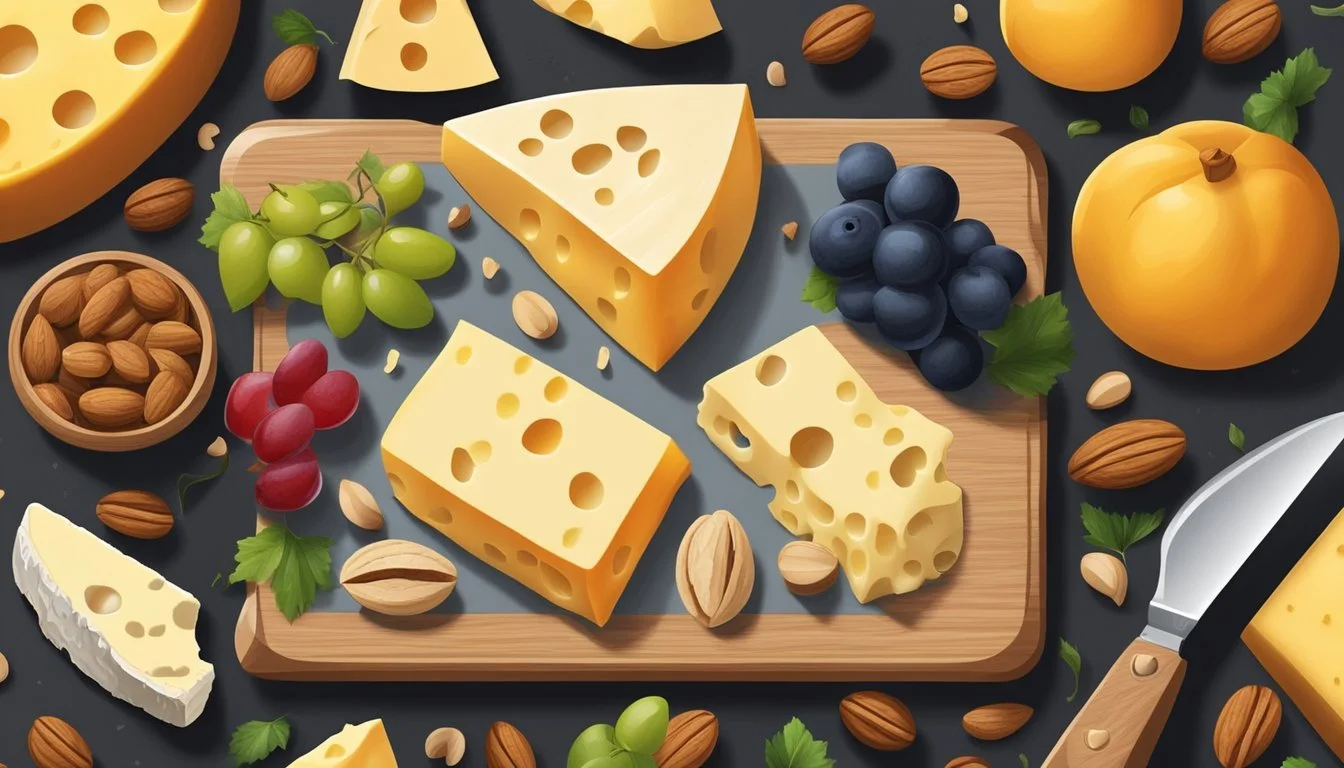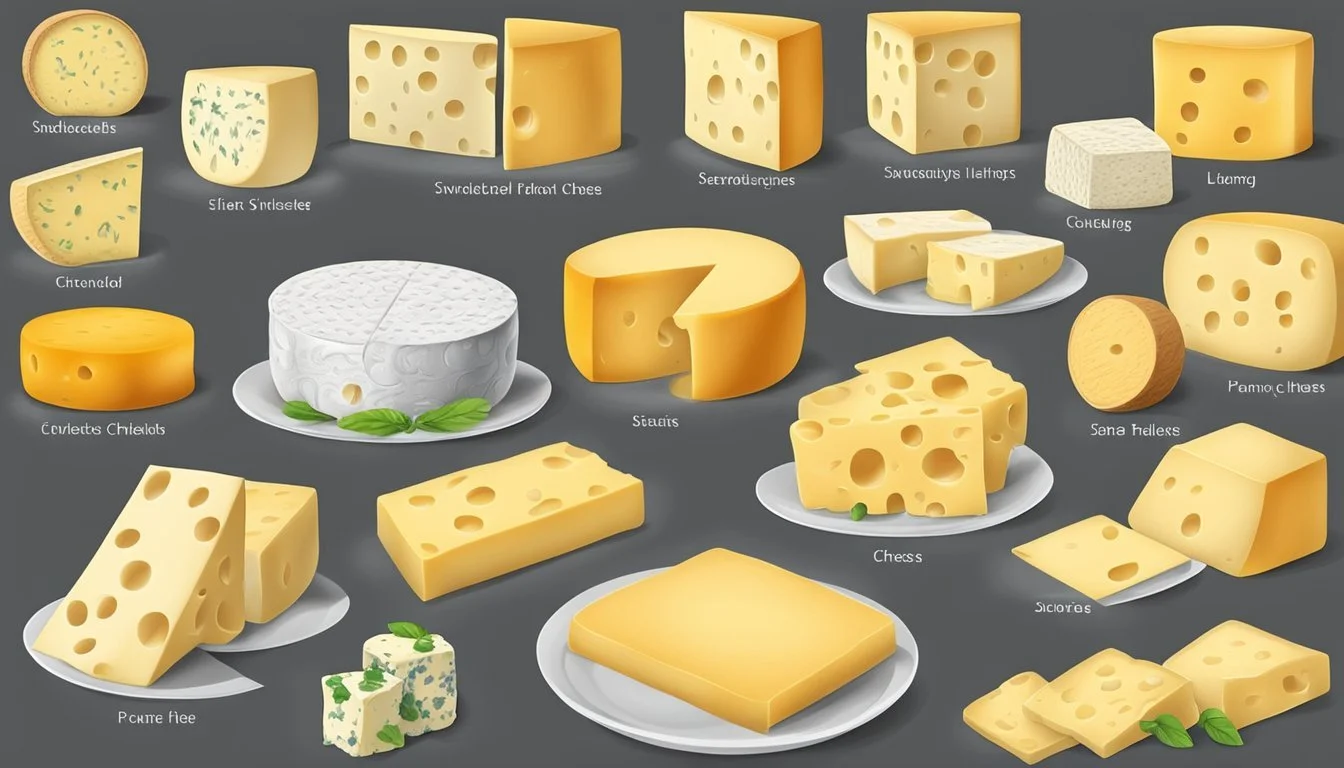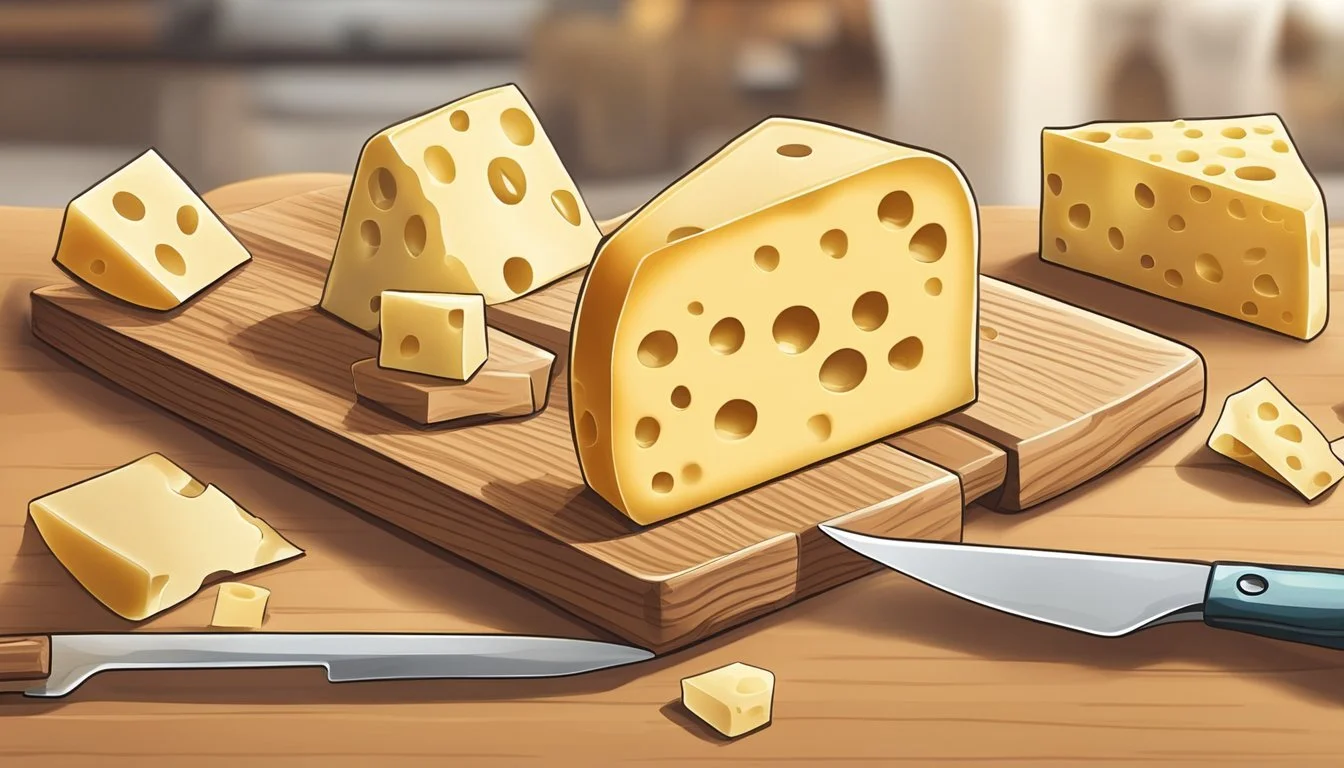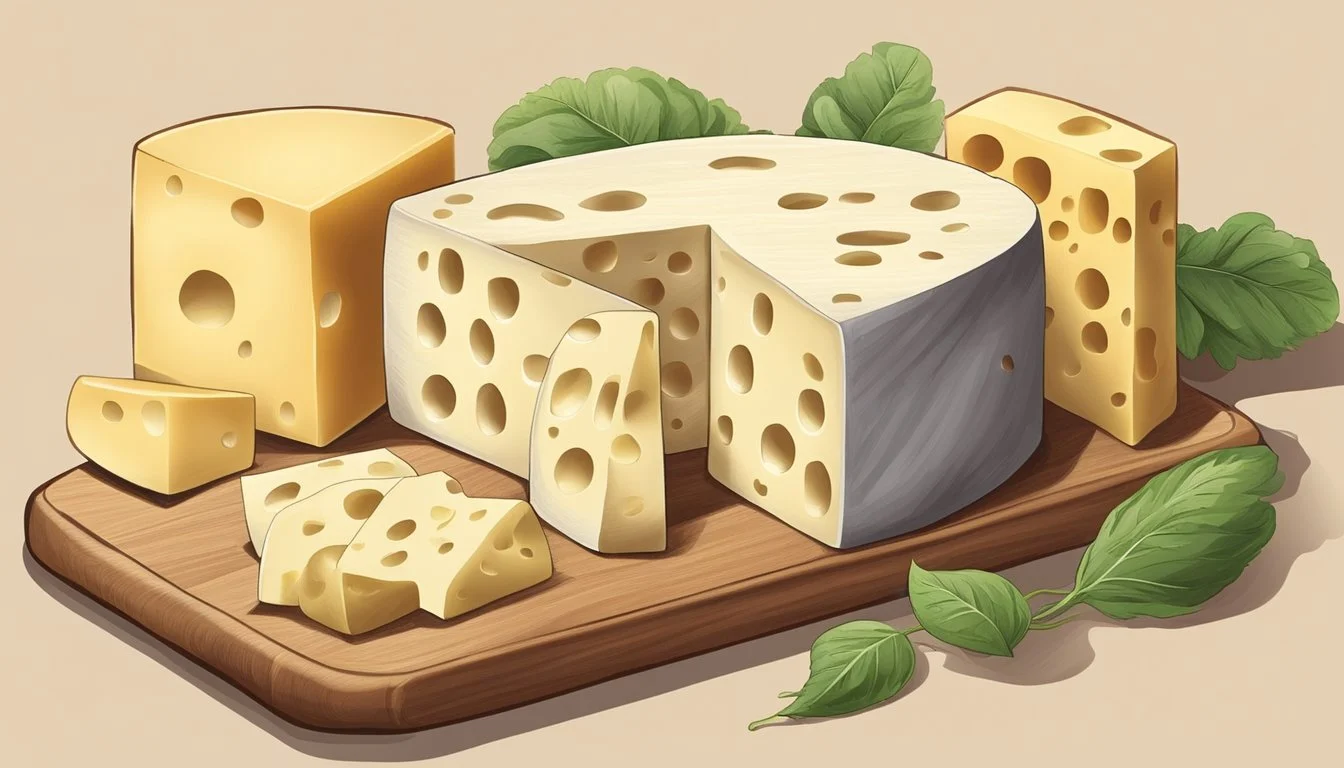Swiss Cheese Substitutes
Discover the Best Alternatives
When it comes to finding substitutes for Swiss cheese, there are plenty of delicious options to consider. Sharp white cheddar is one of the best choices due to its nutty flavor and excellent melting properties. This cheese works well in quiches, casseroles, and pasta dishes, providing a different yet satisfying taste experience.
Another great option is Fontina cheese, known for its rich and creamy texture. Originating from Italy, Fontina offers a medium flavor that can sometimes be slightly mild, making it a versatile substitute in various recipes. For those seeking a fruity note, Vacherin might be a suitable alternative, although its availability can be limited.
For those preferring a harder cheese, Pecorino Romano is an excellent choice. This cheese adds a crumbly and salty dimension to dishes and is usually grated over foods. Each of these substitutes brings a unique flavor and texture to the table, ensuring you don't miss out on the delightful characteristics of Swiss cheese in your culinary creations.
Understanding Swiss Cheese
Swiss cheese, renowned for its distinct holes and nutty flavor, is a beloved dairy product originating from Switzerland. Its creamy texture and unique taste are attributed to specific bacteria and an aging process that sets it apart from other cheeses.
Characteristics of Swiss Cheese
Swiss cheese is easily recognizable by its holes, often referred to as "eyes." These holes form due to the presence of Propionibacterium freudenreichii, a bacterium that produces carbon dioxide gas during fermentation. This gas creates bubbles within the cheese, resulting in its signature appearance.
The flavor of Swiss cheese is mild and nutty. This taste profile, combined with its creamy texture, makes it versatile for various culinary uses. Another characteristic is its pale yellow color, which comes from the cow's milk used in production. The cheese's consistency varies from semi-soft to firm, depending on its age.
The Aging Process of Swiss Cheese
Swiss cheese undergoes an aging process that significantly enhances its flavor. Typically, the cheese is aged for several months, although some varieties can mature for a year or more. During this time, the Propionibacterium freudenreichii continues to work, deepening the cheese's nutty flavor and developing a creamier texture.
Aging is conducted in carefully controlled environments to ensure proper development of both flavor and texture. Temperature and humidity levels are maintained to create the ideal conditions for the bacteria to thrive. This meticulous process not only brings out the best in Swiss cheese but also contributes to its health benefits, as the cheese becomes richer in probiotics and beneficial enzymes as it ages.
Finding the Right Substitute
Selecting an effective Swiss cheese substitute involves balancing texture and taste while also considering health and dietary needs. Different substitutes may be more suitable depending on the specific recipe and personal preferences.
Texture and Taste Considerations
The texture and flavor profile of the selected cheese play crucial roles in determining its suitability as a Swiss cheese replacement. Fontina cheese is a popular choice; its semi-soft texture and mild to medium flavor can mimic Swiss cheese well in various dishes like chicken cordon bleu and paninis.
Fontina Cheese:
Texture: Semi-soft, slightly firm
Flavor: Nutty, slightly tangy, creamy
Another alternative is Gruyère, a hard cheese with a nutty and slightly sweet flavor. It melts well, making it ideal for fondue or French onion soup.
Gruyère Cheese:
Texture: Hard, melts smoothly
Flavor: Nutty, sweet, rich
Emmental, another Swiss variety, offers a similar texture but with more prominent holes and a slightly stronger flavor.
Emmental Cheese:
Texture: Firm, holey
Flavor: Mild, slightly sharp, creamy
Health and Dietary Preferences
When considering substitutes, it's also important to think about health and dietary restrictions. For those avoiding dairy, vegan cheeses made from nuts or soy can offer a viable alternative. These are often fortified with nutrients and can provide a creamy texture similar to Swiss cheese.
Vegan Cheese:
Ingredients: Nuts, soy, plant-based
Health: Dairy-free, often fortified
For individuals with gluten sensitivity or allergies, gluten-free cheese options are plentiful, though it's important to check labels to ensure the absence of gluten-containing additives.
Gluten-Free Cheese:
Ingredients: Various, ensure no gluten additives
Health: Safe for gluten-sensitive individuals
Selecting a cheese that fits dietary preferences can make a significant difference in both the nutrition and enjoyment of the meal. Always consider ingredient lists and potential allergens to ensure that everyone can enjoy the dish.
Cheese Varieties as Substitutes
When looking for alternatives to Swiss cheese, it's crucial to consider the type of dish and the desired flavor profile. Options range from soft and creamy varieties to sharper, more aged selections, as well as nutty and dense variants.
Soft and Creamy Alternatives
Fontina is an ideal substitute for dishes like chicken cordon bleu and paninis. Originating from Italy, this semi-soft cheese offers a rich, creamy consistency with a mild to medium flavor. Its versatility makes it a suitable replacement in many recipes traditionally calling for Swiss cheese.
Mascarpone Cheese and Burrata also belong to the soft and creamy category. Mascarpone has a smooth texture and a light, sweet flavor, making it perfect for sauces and desserts. Burrata, a combination of mozzarella and cream, delivers a delicate taste and a notably creamy interior, making it an elegant option for fresh dishes like salads.
Sharp and Aged Options
For those seeking a more robust flavor, Gruyere Cheese stands out. This aged cheese has a nutty taste with a smooth, melting texture, making it excellent for fondue and gratins. Gruyere is typically aged for six months or more, contributing to its complex flavor profile.
Sharp White Cheddar Cheese is another excellent aged option. Known for its tangy and sharp taste, it can add depth to dishes like macaroni and cheese or baked casseroles. Pecorino Romano, a hard and slightly crumbly cheese, offers a salty kick and is often grated over pasta dishes, providing a distinct alternative to Swiss cheese.
Nutty and Dense Variants
Gouda Cheese brings a nutty, caramel-like flavor and a dense texture to the table. It is available in both young (mild) and aged (sharp) forms, suitable for a variety of culinary applications. Emmental Cheese, another member of the Swiss family, shares a similar nutty flavor and melts well, making it a go-to for fondues and sandwiches.
Manchego Cheese and Edam Cheese also serve as noteworthy substitutes. Manchego, with its slightly tangy and nutty flavor, works well in tapas and charcuterie boards. Edam, less crumbly with decent melting capabilities, can be used in sandwiches and baked dishes.
Each of these cheese substitutes can bring a unique twist to your recipes, ensuring a flavorful and satisfying result.
Substitutes Based on Dishes
Choosing an appropriate substitute for Swiss cheese depends on the specific dish you're making. Consider meltability, texture, and flavor to get the best results.
For Melted Cheese Applications
Fondue commonly uses Swiss cheese due to its melting properties. Fontina cheese is an excellent alternative, offering a rich, creamy texture and slightly mild flavor.
For dishes like pizza and creamy pasta, Gruyère is a go-to substitute. It melts smoothly and has a nutty profile.
When preparing casseroles, Emmental is also a great choice. It offers similar melting characteristics to Swiss cheese, making it effective in providing that coveted gooey texture.
For Baked Goods and Quiches
Quiches and other baked goods can benefit from substitutes like Manchego. Manchego's semi-hard nature helps in providing structure while offering a similar creaminess once baked.
If recipes call for grated cheese within baking mixtures, Edam is a solid alternative. It holds up well under high heat without becoming overly oily.
Also, Pecorino Romano can be used for a sharper, more pronounced flavor. It's typically grated over dishes and melts enough to blend seamlessly into quiche mixes.
For Sandwiches and Salads
Provolone is a versatile option for sandwiches and paninis. Its smooth, firm texture melts easily, making it ideal for hot sandwiches.
Burrata is wonderful for fresh salads, offering a soft, creamy texture made from mozzarella and cream. It pairs well with fresh ingredients and adds a delicate flavor.
For a mild taste in salads, Havarti serves well. It is creamy yet firm enough to be diced into salads without losing its structure.
When aiming for a more pronounced flavor in sandwiches, Gruyère again proves to be highly effective. It boasts good melting properties, providing a silky, rich texture ideal for hearty sandwiches.
Pairing Substitutes with Foods
Swiss cheese substitutes can enhance various dishes in cooking, appetizers, and beverages, creating a rich and diverse culinary experience. With thoughtful pairings, these substitutes can deliver flavors that match well with specific foods and drinks.
Complementary Flavors for Cooking
When cooking, substitutes offer distinct flavors suited to various recipes. Fontina, with its nutty flavor, pairs well with dishes like Chicken Bakes and Mushrooms, enhancing their richness. Vacherin, providing a fruity note, complements hearty dishes such as French Onion Soup. Manchego blends seamlessly in Chicken Cordon Bleu, adding depth without overpowering.
For vegetarian dishes, use Edam with Tomatoes and Basil to create a balanced, aromatic experience. Pecorino Romano, being crumbly and salty, is perfect for grated uses in pasta dishes.
Substitutes as Appetizer Accents
Substitutes can shine in appetizers, serving as flavorful accents. Burrata excels in cold dishes, paired with fresh Fruits like figs or strawberries, accentuated by a drizzle of Honey or Marmalade.
Fontina and Edam are adaptable for Snack boards, complementing elements such as cured Meat and olives. For warm appetizers, consider Vacherin's creamy texture with toast points or crostini, where it can be melted to create a delightful experience.
Pairing Cheese with Beverages
Cheese substitutes can match wonderfully with various beverages, enhancing the tasting experience. Manchego's robust flavor is excellent with Spanish wines, particularly a classic Rioja. Fontina pairs well with an Italian wine, such as Pinot Grigio, offering a crisp balance to its nutty notes.
For a sweeter pairing, Burrata shines with a light, sparkling Prosecco, which complements its creamy texture. Edam and light beers or even cider form an excellent mix. Lastly, Pecorino Romano finds its match with a full-bodied red wine, amplifying both flavors dramatically.
With thoughtful combinations, substituting Swiss cheese can provide unique and delightful culinary experiences, abiding by taste preferences and enhancing the dining moments.
Cultural and Geographical Substitutes
Exploring the cultural and geographical substitutes for Swiss cheese highlights various unique flavors and textures from different regions. From Italy and the Netherlands to Spain and specific regions within Switzerland itself, each offers its own distinctive cheese options.
Italian Cheeses
Italy's northern regions are home to several excellent substitutes for Swiss cheese. Fontina cheese from the Val d’Aosta region is semi-soft with a nutty, mildly tangy flavor. Provolone, another versatile Italian cheese, has a smooth texture and varies from mild to sharp. Mascarpone offers a rich, creamy alternative, particularly for dishes requiring a soft cheese, although its taste is quite different from traditional Swiss varieties.
Dutch and Spanish Cheeses
The Netherlands and Spain offer delightful substitutes. Edam cheese from the Netherlands is semi-hard with a mild, slightly nutty flavor, making it a practical choice. Manchego cheese from Spain, derived from sheep's milk, has a firm texture and buttery flavor. Both cheeses share a pleasing melt quality with Swiss cheese, suitable for various recipes.
Swiss Regional Varieties
Switzerland's own regional varieties provide numerous alternatives. Gruyere cheese is renowned for its firm texture and nutty taste, similar to Swiss cheese but with a more pronounced flavor. Vacherin offers a creamy, mild taste, ideal for fondue. Appenzeller cheese, with its spicy, aromatic flavor, adds a robust option for enthusiasts seeking something unique. Each of these regional varieties complements traditional Swiss cheese dishes while introducing new flavor dimensions.
Storing and Handling Cheese Substitutes
Storing cheese substitutes properly is crucial to maintain their flavor and texture. When storing semi-soft cheeses like Fontina, wrap them in wax paper or parchment paper and place them in a loosely sealed plastic bag. This method prevents excess moisture and mold.
Hard-texture cheeses like Gruyère require a different approach. Wrap them in parchment paper followed by a layer of aluminum foil. This prevents them from drying out while still allowing the cheese to breathe.
For creamy substitutes, such as certain types of Fontina, it's best to store them in airtight plastic containers. These containers help retain the creamy texture and prevent absorption of other fridge odors.
Aging cheese substitutes requires careful storage. Keep them in a dedicated cheese drawer or a cheese cave with controlled humidity. Too much moisture can ruin the aging process, making the cheese overly soft and moldy.
Handling cheese substitutes properly ensures their best quality. Always use clean, dry utensils to cut and serve cheese to avoid contamination. For softer cheeses, cheese knives or wires work well to retain their soft texture without crushing. Hard cheeses are best cut with sturdy cheese planes or sharp knives.
Keep cheese substitutes refrigerated between uses. Let the cheese sit at room temperature for 30 minutes before serving to enhance the flavors and achieve the ideal texture. This method is especially useful for cheeses with a creamy consistency.
By following these simple storing and handling tips, your cheese substitutes will remain fresh and flavorful for all your culinary needs.
Ethical and Sustainable Choices
When looking for substitutes for Swiss cheese, considering ethical and sustainable options can lead to healthier and more environmentally-friendly choices. These alternatives can range from locally-produced, organic cheeses to plant-based options.
Local and Organic Options
Choosing locally-produced and organic cheeses can significantly reduce the carbon footprint associated with transportation and farming practices. Local cheeses often come from small-scale farms that prioritize animal welfare and avoid harmful additives.
Organic cheeses, made from milk produced without synthetic pesticides or fertilizers, promote better soil health and reduce harmful runoff into local water systems. Cheeses such as aged cheddar, Gouda, and Fontina are available in organic varieties, providing a rich and flavorful substitute for Swiss cheese.
By opting for local and organic choices, consumers can support farms that are committed to sustainable and ethical practices.
Plant-Based Cheese Alternatives
For those seeking vegan and more sustainable alternatives, plant-based cheeses offer an excellent option. These products are crafted from ingredients such as nuts, soy, and coconut oil, which can mimic the texture and taste of traditional cheese.
Almond-based cheeses and coconut oil-based cheeses are popular choices due to their creamy texture and mild flavor, similar to Swiss cheese. Additionally, nutritional yeast can be used to add a cheesy flavor to dishes without animal products.
Plant-based cheeses not only adhere to ethical standards by avoiding animal exploitation but also require fewer natural resources, making them a sustainable choice for the environment.







